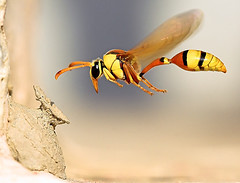 With Manu at Girish's wedding in Dec '09
With Manu at Girish's wedding in Dec '09
I visited Oslo recently and the main attraction to me was the Kon-Tiki museum.I wanted to see for myself the raft that sailed over 4,000 miles across the Pacific ocean from Peru to Polynesia. I heard about Kon-Tiki for the first time from Manu who visited Bangalore about 6 months ago. I was telling him about the two major trips I wanted to embark, one being sailing to Lashadweep. He immediately took me to the magical story of Kon-Tiki.
Thor Heyerdahl, the originator of the idea was in the islands of Fatu Hiva where an old native of the island told him the story of their ancestors. The people of Fatu Hiva were ancestor worshipers whose stories went back to the old chief Tiki, who was considered the son of God. The old man described Tiki as having come from the direction of sun in a plain raft. Thor Heyerdahl musing over this story saw the link between South America and Polynesia. Until then he had been intrigued by the huge stone statues erected on these islands and the similarities in culture with ancient south americans. Upon his return, he searched for facts to strengthen his arguments and found that Kon-Tiki was another name for the Sun-King in ancient Peru.
 The original raft at Oslo
The original raft at Oslo
The legends that have survived among the American Indians describe the sun-king and other white men were attacked by an Indian chief named Cari over the lake Titicaca (from across current day Bolivia) and massacred the white men. But Kon-Tiki and his closest associates escaped westward into the Pacific. I tried looking up for more references around this, but even the expert on pre-Columbian settlements, Adolph Bandelier, does not make a reference to the escape although he noted the attack of Cari upon the white tribes. Nevertheless Thor put forth his theory to be duly returned to him as a flight of fancy and everyone unanimously pointed that there existed no boats during those days to navigate such distances and a balsa raft, which was in use then, was water absorbent and had to be dried periodically before use and was hardly sea-worthy.
After visiting many professors and nearly going bankrupt in the meanwhile, Thor decides to prove his weakest link by a practical example. He decides to undertake an expedition himself on a balsa raft from Peru to Polynesia to show that the raft was sea-worthy. He gathered the details of the balsa raft used then and after carefully choosing wet balsa wood from the inner forests of Peru which was more water resistant than the dry balsa wood, the raft was built with a single sail as described the local tribes. The expedition consisted of six members including Thor.
There were also other criticisms to the theory. Some argued that even if a raft could manage the distance it'd leave everyone on board dead due to thirst since they could not survive on rain water alone for four months across the Pacific. This was overcome by carrying coconuts that didn't add to the weight as they could be tied o the raft and left afloat. They also carried sweet potatoes that could last the expedition easily and complement the sea food they'd hunt on the way.
The expedition was not without difficulty, they had to face the storms. However the boat took them with ease as the waves that splashed over the raft simply went down between the rafts. Towards the end of the expedition the coconuts sprouted lugging the raft down and depleting their water resource. However they'd also collected some rain water during the journey. Even after they sighted land after 93 days, the raft was just swept away from Tuamotu islands. After another four days they came close to Angatau island where the locals noticed them and tried paddling towards them and they were still swept away. Four more days later they hit a coral reef at Raroria bringing the expedition to a close. The raft was then recovered and sent to Norway.
Epilogue: The expedition proved that it was possible to sail the Pacific in a raft and provided strong support to the links found on Polynesian islands and South American civilisations. The success of this expedition led Thor Heyerdahl to conduct a similar expedition from Africa to South America to prove that the similarities between the cultures of these two continents were no coincidence either. The papyrus boat Ra I could not complete the journey due to design flaws and a reconstructed boar Ra II made it from Morocco to Barbados. This expedition included members from round the world as a symbol of unity after the world war and was the first expedition to sail under the UN flag. During the sailing of Ra I, it was observed that the sea pollution greatly affected the boats with lumps of oil found stuck to the boats. This led to the awareness of sea pollution in the Atlantic and eventually led to the ban of emptying oil waste in the Atlantic.
The other notable expedition include the Tigris, which was made of reed bundles and sailed the Indian Ocean with similar objective connecting the Egypt and Indus valley. However the expedition was terminated after sailing 6,800 kms with the crew unanimously deciding to burn the boat in the Red sea where they were surrounded by war on all sides. The expedition carried a message to the UN to stop delivery of weapons and preserve the cultures that has led to the current civilisation. However weapon delivery continues by sea even to the current day.




